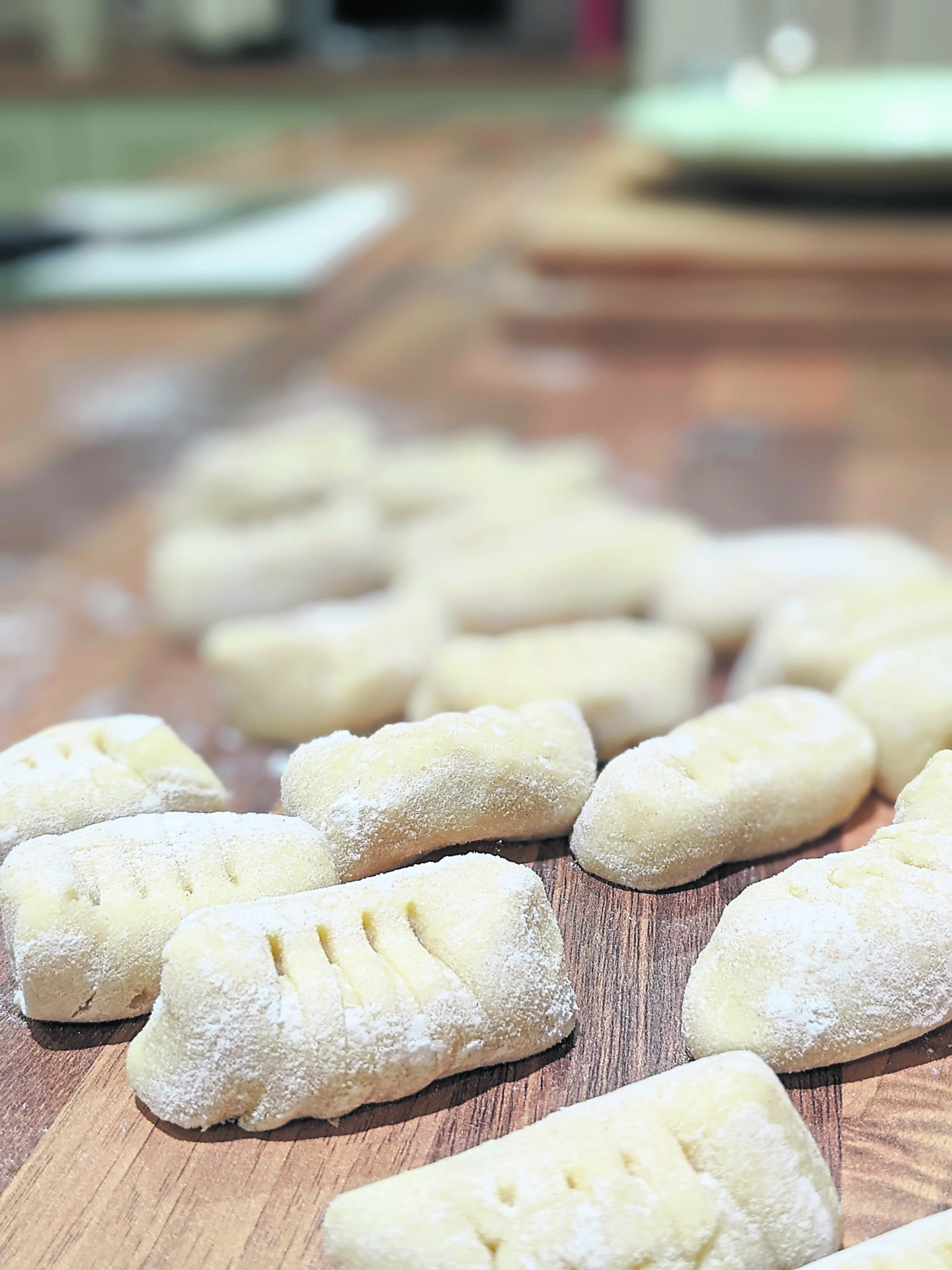Like any other household, we have various leftovers from time to time although I am loathe to bin anything which might be consumed at a later stage.
One thing that usually doesn’t feature as a leftover is potatoes, mashed or otherwise.
This has nothing to do with my predicting exactly how many potatoes will be consumed, peeling and steaming precisely the right quantity – oh, no. Instead, it has everything to do with me being a greedy bugger and eating all leftover potatoes, mashed or otherwise, before the table is vacated. An extra pinch of salt here and another knob of butter there… nothing quite like mashing leftover spuds on the side of your plate and gobbling them up at your leisure!
Speaking of mash, one of my other great delights in the kitchen is when I’m making Dad’s Deadly Mash. Without exception, mash is always made with floury potatoes and of the floury variety, I change my spud of choice as the year goes by.
At the moment it’s Roosters and these will be the spud of choice until the new spuds kick in during the springtime. Then it’ll be Navan and Queens and latterly Kerr’s Pinks. However, I digress…
Making Dad’s Deadly Mash is a simple affair but very affective. I’ll likely devote a whole column to mash later in the year but for now, suffice it to say that the spuds are steamed until tender, allowed to dry in their own heat and then they are squeezed through a ricer into a bath of hot butter and milk, before being beaten with a wooden spoon via lots of good salt and a little white pepper. Truly, this mash is a thing of wonder and, knowing this, that great delight in the kitchen that I mentioned, is having each member of the household taste the still hot, seasoned and buttery mash before it hits the table. I do this under the auspices of them checking the seasoning but really (and don’t let on), I just like to see their faces light up with sheer joy as they taste this magnificent yet humble fayre. Even the gloomiest mood can be brightened with a spoonful of Dad’s Deadly Mash. Smooth and warming and wholesome, it’s the kind of stuff you’d order as a last meal.
This is why I find it almost impossible to have any leftover potatoes, mashed or otherwise.
I should also point out at this juncture than unlike some other people who eat potatoes every day that ends in a Y, I’m a once-a-week kind guy – even if that.
I can sense my father rolling his eyes at that. “That cub’ll never learn,” he might be saying. But that’s from a man who only eats something like pasta once or twice a year – and even then he might have a bowl of spuds on the side of his bolognese.
But (and it’s a big one), I might have a pasta dish in which even he would be interested. The answer: Gnocchi.
“Purty-based pasta,” he might be saying. “That cub’ll never learn.”
We’ll have to see about that.
Gnocchi is part potato, part pasta and all loveliness. And it’s one of those dishes which, like pasta or spuds, works as a great carrier for taste. I’ve never done something like gnocchi bolognese in the same way that I’ve never done gnocchi, bacon and cabbage. However, I’m pretty sure it would work in both instances.
My preferred mode of consumption at home is twofold: Gnocchi on a bed of rich tomato sauce topped with parmesan or, gnocchi topped with a sage leaves fried in butter and more parmesan.
“That cub’ll never learn.”
INGREDIENTS
400 – 500g of leftover mash or if you’re a mash gulpin like me, three or four spuds steams until tender and then mashed
400 – 500g of plain flour and possibly more or possibly less
1 large egg
big pinch of salt
THE PLAN
Dump the mash into a large bowl and crack in the egg and add the pinch of salt.
Begin adding the flour and mix through with a spoon until it starts to come together as a dough. At some stage you’re have to get your hands in. But ultimately you need to keep adding the flour and mixing and kneading gently until you have a soft dough which is smooth but not sticky.
Turn this out onto a floured surface and then pretend you’re playing with plasticine (or play dough if you’re a millennial reading this). Cut the dough into four and then one at a time, roll each quadrant out into a thin rope. If things start to get sticky just add another pinch or three of the flour.
Using a knife, cut the rope length into half inch pieces. Congratulations you’ve just made gnocchi.
Repeat this process until all the dough has been rolled and cut and you’re left with lots and lots of the little pieces. These can either be left alone or you can roll them with the tines of a fork. I like to roll with the fork because I reckon that the little grooves help trap the tomato sauce or the sage butter.
Next, bring a large saucepan of water to a rolling boil and add another pinch of salt.
In batches, add the gnocchi to the water and let it rip. Let them bubble for two or three minutes until they’re cooked through. You’ll know when they’re ready because they handily float to the surface and bob about.
Scoop them out with a slotted spoon and then devour as per preference and at your leisure.
The cub has learnt!









